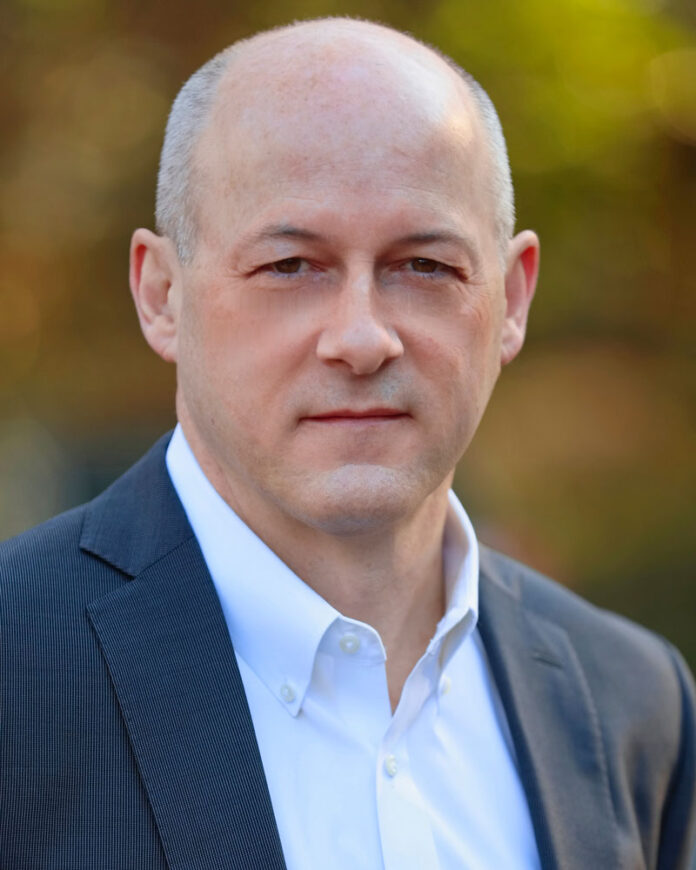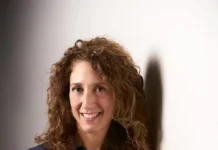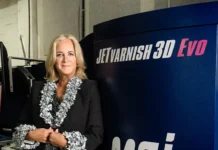PostPress
PRINTING United Alliance President and CEO Ford Bowers held several roles in several industries during his career before finding his way to the printing industry. As he explained, it was “through a series of coincidences that I wound up in printing about 15 years ago. It certainly wasn’t planned, but now that I’m in it, I couldn’t be happier. It is creative, challenging, ever-changing and fulfilling. I left other jobs principally due to boredom. I’ve never been bored a day in this industry, whether as a project manager, a printing plant manager or, now, in an association role. It has been, and no doubt will continue to be, a wonderful industry to work in.”
PostPress recently got together with Bowers to discuss his time in the industry and changes to the association, as well as challenges facing print and what the future may hold.
Earlier this year, SGIA and PIA merged to become PRINTING United Alliance. How has this merger helped to strengthen the association, and what changes will this bring?
The immediate advantage was to bring together two groups of industry experts across a range of subject matter, including government and regulatory affairs, training and education, human resources, research and economics. These resources now are available to both the former SGIA and PIA members.
This coming together also extends our membership, which now represents commercial, apparel, wide format and industrial, as well as growing packaging and in-plant segments.
The challenge in the coming year will be to go through the process of integrating technical and procedural operations so that members can fully take advantage of all we have to offer (e.g. websites, learning management system, association management system, etc.). There still is much to be done. At the end of this journey, there will be an experience for members where, regardless of their current business focus, they will find information, expertise and resources to address their day-to-day issues or to explore other areas as needed.
What challenges are facing the industry in the next few months?
We certainly are not clear of the COVID-19 pandemic and the issues wrought by its disruptive force. That said, I believe – maybe hope – we have plateaued at a “known level” of economic fallout at the macro and micro level, so that everyone can make plans and adjust strategies accordingly. Unknowns are much more difficult to deal with.
I believe the industry will bounce back as the pandemic is brought under control, most probably only after widespread vaccination programs become available. Our industry may well lag the larger economy, however, as much printed product requires cash flow for customers to return first before orders are placed.
I also believe that many of the trends that were underway prior to the pandemic now will be accelerated. Trends present opportunities, but by their nature also are challenging. For example, inkjet replacing analog printing methods, mergers and acquisitions (especially in the commercial market) and also innovation in general – we are a very adaptive industry and crises bring out unforeseen benefits in time – all change the competitive landscape and, despite economic stress, still must be taken into consideration.
How will PRINTING United Alliance help members navigate these challenges?
Early on, we mobilized our subject matter experts in human resources, government and regulatory affairs, environmental, health and safety, economics and research to assemble in one place a trove of information related to the pandemic and its effects, government programs, state by state regulatory tracking, federal relief programs and so forth. This was put together on our COVID-19 Resource Channel as a collaborative effort through the Alliance, PIA affiliates and NAPCO Media. These resources have been viewed hundreds of thousands of times, are updated almost daily and have been a tremendous one-stop resource for printers. No other organization in North America has the staff experts and the audience reach to propagate this information so quickly and efficiently. This is another benefit of the organization built over the past few years.
We will continue this effort of bringing timely and targeted information on the pandemic until the situation has resolved in large part. Beyond that, the best course is to bring back, as appropriate, those opportunities for the regular pattern of an industry to reemerge. So, conferences, summits, events, training and education will be brought back as circumstances allow to further spur the revival of print.
How did moving to a virtual format alter the PRINTING United experience for attendees?
Of course, nothing can replace the features of an in-person event. But we believe that we put together an extremely impressive program with content appropriate for each of the major segments.
On each of the 14 days, there was education, expert analysis, product demonstrations and new product launches. Each day was dedicated to a different segment of the industry, such as commercial, apparel, textile, industrial, etc. It also included elements of engagement for follow up with exhibitors on demos and new products, virtual business card exchanges, appointment scheduling and so forth.
What are your predictions for the industry in the next year? The next five years?
I’m not the best prognosticator of the future. There certainly are keener minds than mine who carefully watch the signs and trends. That said, I have touched on a few in this interview – adoption of digital inkjet, mergers and acquisitions, and continued innovation.
Additionally, I have believed for a while that systems built to plug customers into the workflow will be the key to maintaining a “sticky” relationship, and this will be a focus for forward-thinking print service providers. I also believe that print providers who excel will need to become more adept in related disciplines and their languages, trends, innovations and learnings (think consumer behavior, marketing, supply chain management and so forth). The ability to relate to these and understand how a given solution fits in or complements these will become more important in an increasingly integrated and complex world.
Customers need help navigating this sort of multi-disciplinary approach – take advantage of the fact that it’s new for everyone.





